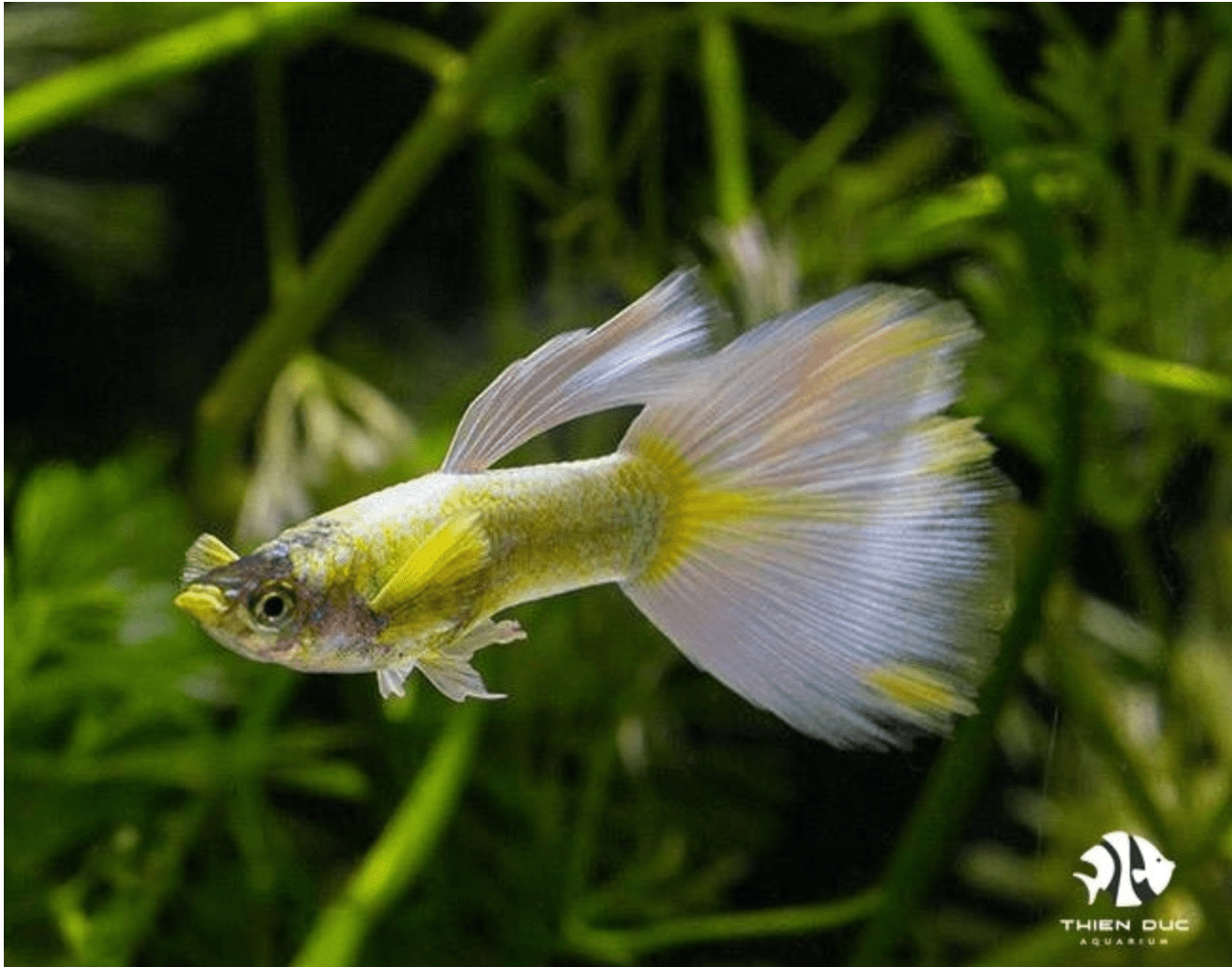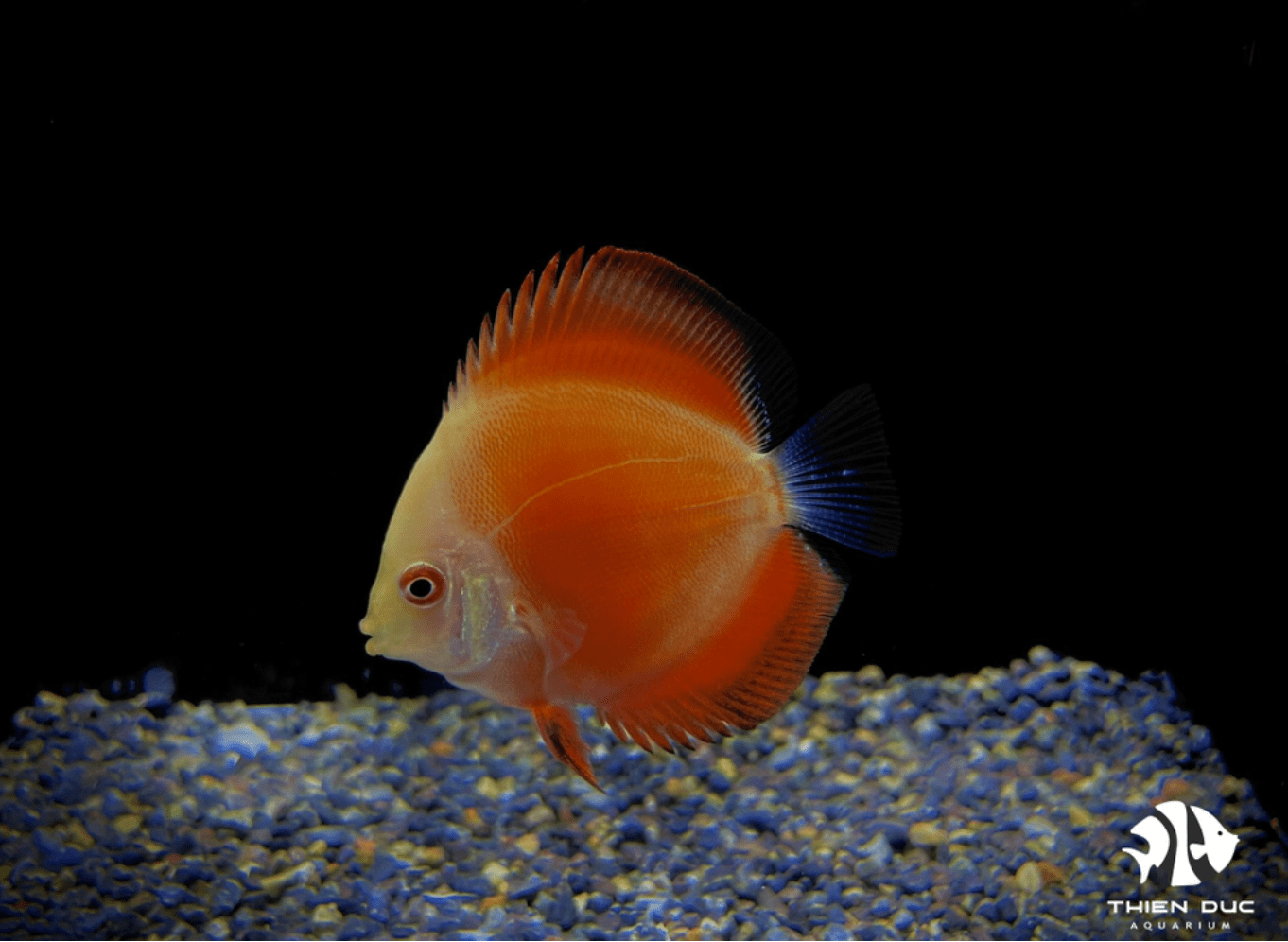Betta Fish Care - A Detailed Guide for Beginners
Welcome to the world of Betta splendens, whose vibrant colours and personalities have captivated European aquarists. At THIENDUC AQUARIUM, we've passionately exported high-quality freshwater fish to the UK, Germany, France, and the Netherlands since 2012. This guide is born from that passion, offering essential knowledge for proper Betta Fish Care. We'll debunk the dangerous myth that Bettas can thrive in tiny bowls, showing you how to create a healthy environment for your aquatic jewel. Providing this care is not only vital for their well-being but also deeply rewarding.
Configuring the Ideal Betta House
Creating the ideal habitat is the most critical first step in your journey. A well-planned aquarium is the cornerstone of responsible Betta Fish Care and will prevent many common health problems down the line.
Tank Selection: Size Matters
The single most important decision you will make is the size of the tank. While pet shops may display Bettas in small cups, this is for temporary retail purposes only and is not a suitable long-term home.
-
Minimum Size: We strongly recommend a minimum tank size of 9.5 litres (2.5 gallons). However, an ideal setup for a single Betta is a tank of 19 litres (5 gallons) or more.
-
Why Bigger is Better: A larger volume of water is more stable. Toxins from fish waste, such as ammonia, dilute more easily, and the water temperature remains more consistent. It also provides your Betta with adequate space to swim, explore, and exhibit natural behaviours, which is vital for their mental and physical health.
-
Lid is a Must: Bettas are known for their athletic ability—they can and will jump! A secure lid is absolutely essential to keep your fish safely inside its aquarium.

Essential Equipment
To replicate a Betta's natural tropical environment, a few pieces of equipment are non-negotiable.
-
Heater: Bettas are tropical fish native to the warm waters of Thailand and Cambodia. They require a stable water temperature between 25.5-26.7°C (78-80°F). An adjustable aquarium heater is crucial, especially in the cooler climates of Europe, to maintain this warmth and prevent stress and illness.
-
Filter: A filter is vital for maintaining a clean and healthy environment. It contains helpful bacteria that decompose toxic waste. For a Betta, choose a filter with a gentle, adjustable, low flow. Strong currents will buffet their long fins and cause significant stress. A small sponge filter or a hang-on-back filter with an adjustable outflow is an excellent choice.
-
Lighting: A simple LED light will beautifully showcase your Betta's colours and helps to establish a natural day/night cycle. 8–10 hours of light should be your daily goal.
Substrate & Decorations
Decorations are not just for aesthetics; they provide enrichment and security for your fish.
-
Substrate: Choose a smooth gravel or sand for the bottom of the tank. Sharp or rough substrates can easily tear a Betta's delicate, flowing fins.
-
Plants & Decor: This is where the practice of good Betta Fish Care truly comes to life. Avoid sharp-edged, hard, plastic plants. Instead, opt for soft silk plants or, even better, live plants. Species like Java Fern, Anubias, and Marimo Moss Balls are hardy, low-light plants perfect for beginners. Always provide hiding spots like a small cave, a floating "Betta log," or dense planting areas where your fish can rest and feel secure.

The Secret to Health: Water Quality
Pristine water is paramount to the health of any aquarium inhabitant. Understanding a few basic principles of water chemistry will make maintenance simple and effective.
The Nitrogen Cycle Explained
Don't be intimidated by the term "nitrogen cycle." It's a simple, natural process that is the foundation of a healthy aquarium. In basic terms:
-
Your fish produces waste (ammonia), which is highly toxic.
-
Beneficial bacteria convert that ammonia into nitrite, which is also toxic.
-
A second type of beneficial bacteria converts the nitrite into nitrate, which is far less harmful and is removed via water changes. This cycle must be established in your tank (a process called "cycling") before adding your fish, or managed carefully with a new fish. This is a non-negotiable aspect of Betta Fish Care.
Treating Tap Water
Municipal tap water across Europe contains chlorine or chloramine to make it safe for human consumption, but these chemicals are lethal to fish. You must always treat tap water with a water conditioner before adding it to the aquarium. This instantly neutralizes these harmful substances.
Water Changes
Your aquarium will benefit greatly from routine water changes. They restore vital minerals and eliminate nitrates that have accumulated.
-
Frequency & Amount: For a filtered tank of 19 litres or more, a weekly water change of 25-30% is a good rule to follow.
-
Procedure: Use a gravel vacuum or siphon to remove water from the bottom of the tank. This allows you to simultaneously clean any debris from the substrate. Then, slowly add the fresh, temperature-matched, and conditioned water back into the tank. Consistent water changes are the best preventative medicine in Betta Fish Care.

Diet and Feeding
A proper diet is essential for vibrant colour, good energy levels, and a long lifespan.
A Carnivore's Diet
Bettas are naturally insectivores. They should eat a lot of protein-rich foods.
-
Staple Food: The core of their diet should be a high-quality pellet or flake specifically formulated for Bettas. Look for products with whole fish or insects listed as the first few ingredients.
-
Treats: To provide enrichment and a nutritional boost, supplement their diet 1-2 times a week with frozen or freeze-dried foods. Bloodworms, daphnia, and brine shrimp are excellent choices that your Betta will eagerly hunt. This variety is an important part of a holistic Betta Fish Care regimen.
How Much & How Often
-
Portion Control: A Betta's stomach is roughly the size of its eye. Feed only what your fish can consume within two minutes, once or twice per day. This usually amounts to 2-3 pellets per feeding.
-
The Dangers of Overfeeding: Overfeeding is one of the most common mistakes beginners make. It may result in major health problems like constipation and bloating. Uneaten food also decays, fouling the water and producing toxic ammonia.
Understanding Betta Behavior & Health
Observing your Betta is one of the great joys of keeping them. Their behaviour can tell you a lot about their health and happiness. Proper Betta Fish Care involves paying close attention to these signals.
Common Behaviors
-
Flaring: When a Betta puffs out its gills and fins, this is called "flaring." It's a natural territorial display, often seen when they see their reflection. A small amount of flaring is healthy exercise, but constant flaring can be a sign of stress.
-
Bubble Nesting: A male Betta that is happy and healthy may build a nest of bubbles at the water's surface. This is an instinctual behaviour indicating he is mature and comfortable in his environment. It is a fantastic sign that you are providing excellent Betta Fish Care.
Signs of a Healthy Betta
A healthy Betta will be active and curious, have vibrant colouring, and fins that are held open and intact. They should be responsive to your presence and have a healthy appetite.
Common Illnesses & Prevention
While there are several potential illnesses, the most common ones like Fin Rot and Ich (white spot disease) are almost always caused by stress from poor water conditions. The absolute best way to prevent disease is to maintain a clean, warm, stable environment as outlined in this guide.
Tank Mates: Selecting Friends Carefully
The name "Siamese Fighting Fish" is there for a reason. Selecting tank mates needs careful thought.
The "Fighting Fish" Title
Male Bettas are aggressively territorial towards their own species and must never be housed together, as they will fight to the death. They can also mistake other brightly coloured, long-finned fish for rival Bettas.
Suitable Companions (for 19+ litre tanks)
If you wish to add tank mates, it's crucial to have a sufficiently large tank (at least 19-20 litres) with plenty of hiding spots. Choose companions that are peaceful and occupy a different area of the tank.
-
Good Choices: Nerite snails, Amano shrimp (if the Betta's temperament allows), and peaceful bottom-dwellers like Kuhli Loaches or certain types of Corydoras catfish are often suitable.
-
What to Avoid: Steer clear of fin-nippers like many tetras and barbs, and avoid other colourful fish like guppies. A peaceful community is a key goal of advanced Betta Fish Care.
Conclusion
Caring for a Betta fish is a rewarding commitment. Success hinges on the cornerstones of Betta Fish Care—a properly sized and heated tank, pristine water quality, and a high-quality diet—which ensures a thriving pet. At THIENDUC AQUARIUM, we pride ourselves on the quality of fish we supply to our European partners. We hope this guide empowers you to give your Betta the best possible life and share in the wonder of the aquatic world. Feel free to contact us with any inquiries.
Contact Information:
-
Address: 57 Le Thi Sieng, Tan Thong Hoi, Cu Chi, Ho Chi Minh City, Viet Nam
-
Mobile: +84903912501
-
Office: +84982577871
-
Email: thien@thienducaquarium.com










